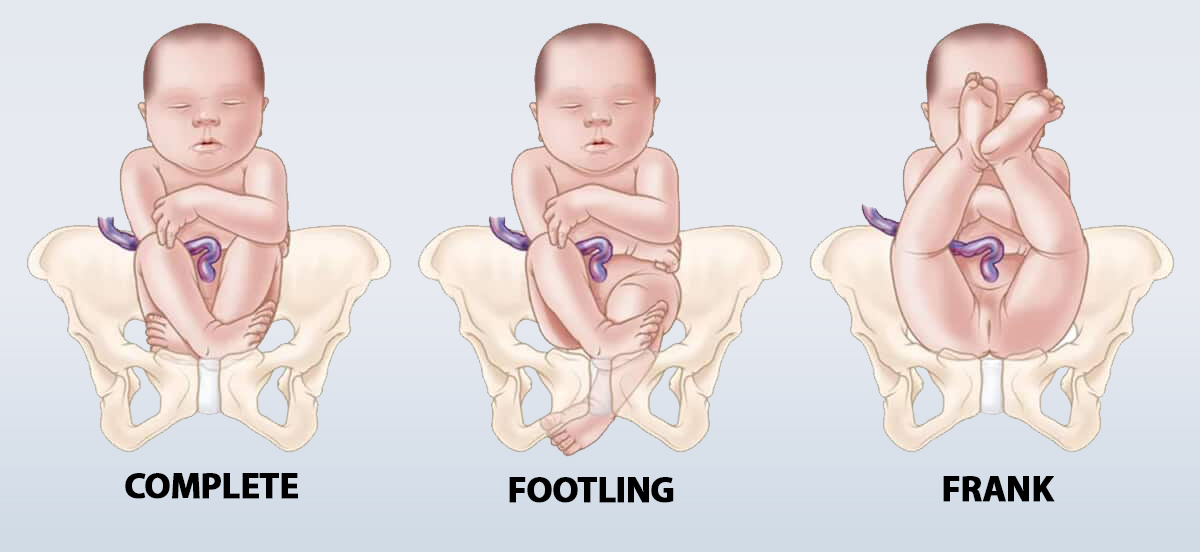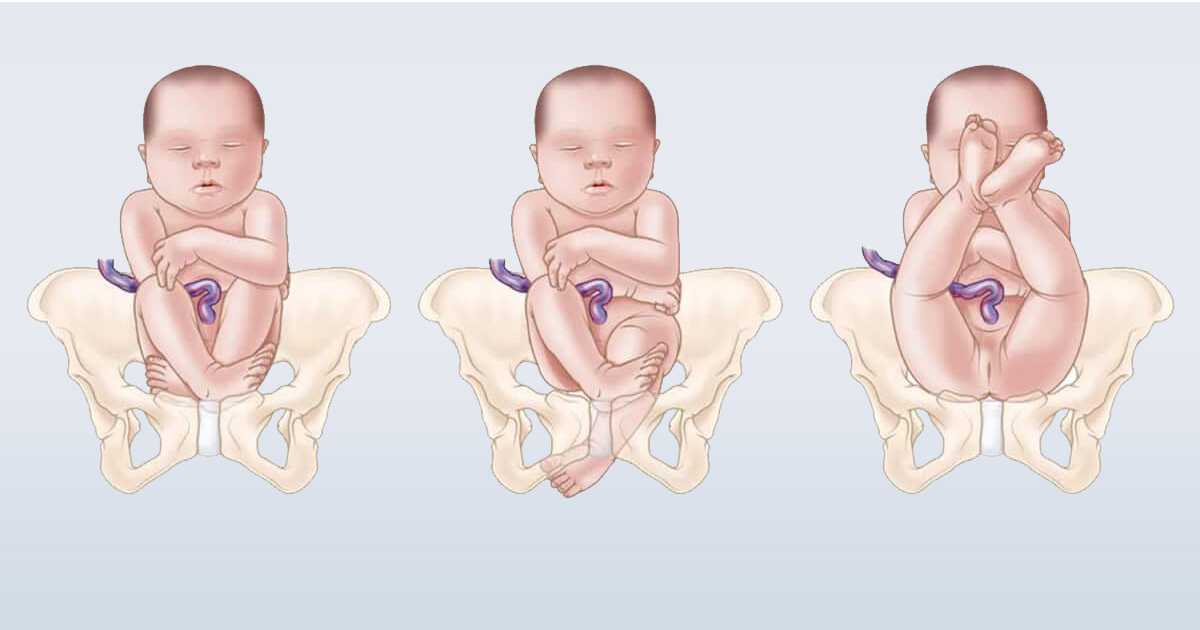Finding out that your baby is in a breech position can be a concerning discovery for expectant parents. A breech baby is positioned with their bottom or feet facing downwards in the womb, rather than the head. While most babies turn head-down by the end of pregnancy, approximately 3-4% of full-term pregnancies will result in breech presentations. If your baby is breech, there are several steps you can take to encourage them to turn, as well as various delivery options to consider.
Understanding Breech Positions
Before delving into solutions, it’s essential to understand the different types of breech positions:
- Frank Breech: The baby’s buttocks are aimed at the birth canal, with legs sticking straight up in front of their body and feet near the head.
- Complete Breech: The baby’s buttocks point downward with legs folded at the knees and feet near the buttocks.
- Footling Breech: One or both of the baby’s feet point downward and would be delivered first.

Why Are Some Babies Breech?
Several factors can contribute to a breech position, including:
- Premature Birth: Babies born prematurely are more likely to be breech.
- Multiple Pregnancies: Twins or triplets have less room to move into the head-down position.
- Excessive or Insufficient Amniotic Fluid: Too much fluid can give the baby too much freedom to move, while too little can hinder movement.
- Uterine Abnormalities: An irregularly shaped uterus can prevent the baby from moving into the head-down position.
- Placenta Placement: A placenta positioned low in the uterus can obstruct the baby’s ability to turn.
Methods to Turn a Breech Baby
If your baby is breech, there are various techniques and methods to encourage them to turn naturally before labor begins.
1. External Cephalic Version (ECV)
External Cephalic Version (ECV) is a procedure where a healthcare provider applies pressure to the abdomen to manually turn the baby to a head-down position. This procedure is usually performed in a hospital at around 37 weeks of pregnancy. It has a success rate of approximately 50-60%, and while generally safe, it does carry some risks such as premature labor, umbilical cord problems, or placental abruption. Therefore, ECV is typically performed with continuous fetal monitoring.
2. Maternal Positioning Exercises
Certain exercises and positions may help the baby turn naturally:
- Forward-Leaning Inversion: Kneel on the edge of a couch and lower your forearms to the floor, keeping your head down and hips elevated. This position helps to relax the uterus and increase space in the lower part.
- Pelvic Tilts: Rock your pelvis back and forth while on your hands and knees. This can encourage the baby to move.
- Breech Tilt: Lie on your back with your hips elevated about 9-12 inches using pillows. Stay in this position for about 10-15 minutes a few times a day.
- Swimming: The buoyancy of water can help the baby to turn more easily.
3. Chiropractic Care
The Webster Technique is a chiropractic method that aims to balance the pelvis and align the spine, potentially creating more space in the uterus for the baby to turn. It’s essential to seek a chiropractor experienced in prenatal care for this procedure.
Delivery Options for Breech Babies
If the baby does not turn, discussing delivery options with your healthcare provider is crucial.
1. Vaginal Breech Delivery
In some cases, a vaginal breech delivery may be possible, especially if the baby is in a frank breech position. This type of delivery requires an experienced obstetrician and specific conditions such as:
- The baby must be full-term.
- The baby should not be too large.
- The mother’s pelvis should be adequately sized.
- The baby’s head should be flexed (not extended).
2. Cesarean Section (C-Section)
A C-section is the most common delivery method for breech babies, especially if a vaginal delivery is deemed risky. Planned C-sections are usually scheduled around 39 weeks of pregnancy. While a C-section is a major surgery and carries its own risks, it is often considered the safest option for breech presentations.
Coping and Preparing for Delivery
Finding out your baby is breech can be stressful, but there are several steps you can take to manage the situation effectively:
- Stay Informed: Educate yourself about breech presentations and delivery options.
- Discuss with Your Healthcare Provider: Have an open conversation about the risks and benefits of each delivery method.
- Create a Birth Plan: While flexibility is key, having a plan can help you feel more prepared.
- Consider a Second Opinion: If unsure about your provider’s recommendations, seeking a second opinion can offer additional perspective.
Conclusion
Discovering your baby is breech can be daunting, but many strategies can encourage the baby to turn naturally. If these methods are unsuccessful, there are safe delivery options to consider. Working closely with your healthcare provider, staying informed, and maintaining a positive outlook will help you navigate this situation with confidence, ensuring the best possible outcome for you and your baby.

